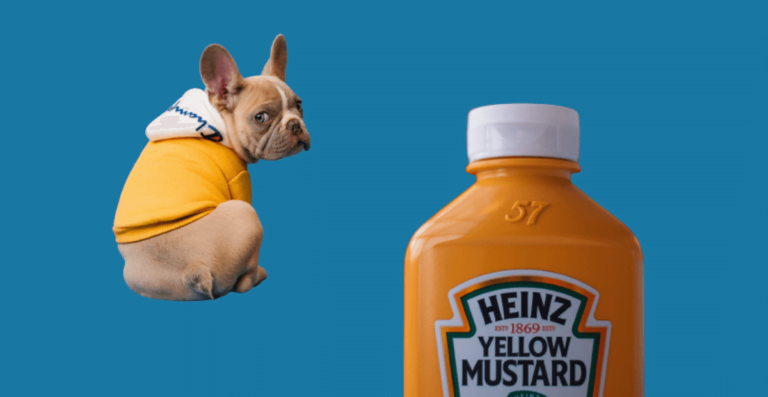The Ultimate Guide to Dog Ear Cleaners: How to Keep Your Dog’s Ears Healthy and Infection-Free
As a dog owner, you know that your furry friend’s health and happiness are top priorities. While regular grooming, feeding, and exercise are essential, one area that often gets overlooked is ear care. Dogs, especially those with floppy ears or a history of ear issues, are prone to ear infections, wax buildup, and discomfort. That’s where a high-quality dog ear cleaner comes in.
In this blog post, we’ll explore everything you need to know about dog ear cleaners, why they’re important, how to use them, and how to choose the best one for your pup.
Why Dog Ear Cleaning is Important
Dogs rely on their ears for balance, communication, and hearing. However, their ear canals are more vertical and L-shaped than humans’, making them prone to trapping dirt, moisture, and debris. This can lead to:
Ear Infections: Bacteria and yeast thrive in warm, moist environments, making your dog’s ears a prime target.
Wax Buildup: Excessive wax can block the ear canal and cause discomfort or hearing issues.
Parasites: Ear mites are a common problem, especially in puppies.
Odor and Discomfort: Dirty ears can lead to unpleasant smells and itching, making your dog miserable.
Regular ear cleaning with a dog ear cleaner can prevent these issues and keep your pup’s ears healthy.
Signs Your Dog Needs Ear Cleaning
How do you know when it’s time to clean your dog’s ears? Look out for these signs:
- Frequent Scratching or Pawing at Ears: This could indicate irritation or discomfort.
- Redness or Swelling: Inflamed ears are a sign of infection or irritation.
- Unpleasant Odor: A foul smell often signals an infection or buildup.
- Discharge: Yellow, brown, or black discharge is a red flag.
- Head Shaking or Tilting: This could mean your dog is trying to relieve ear discomfort.
If you notice any of these signs, it’s time to clean your dog’s ears or consult your vet.
How to Choose the Best Dog Ear Cleaner
Not all dog ear cleaners are created equal. Here’s what to look for when selecting the right product for your pup:
Ingredients:
- Natural Ingredients: Look for cleaners with soothing ingredients like aloe vera, chamomile, or tea tree oil.
- Antibacterial and Antifungal Properties: These help prevent infections.
- Alcohol-Free: Alcohol can dry out and irritate your dog’s sensitive ears.
Type of Cleaner:
- Liquid Solutions: These are the most common and effective for dissolving wax and debris.
- Wipes: Convenient for quick cleanups but may not reach deep into the ear canal.
- Powders: Ideal for drying out moisture in dogs prone to ear infections.
Ease of Use:
Choose a product with clear instructions and an applicator that makes the process stress-free for both you and your dog.
Vet-Recommended:
If your dog has a history of ear issues, consult your vet for a recommended product.
Breed-Specific Needs:
Some breeds, like Cocker Spaniels or Basset Hounds, are more prone to ear problems and may require specialized cleaners.
Top 5 Dog Ear Cleaners on the Market
To make your search easier, here are five highly-rated dog ear cleaners:
- Zymox Ear Cleanser
- Contains natural enzymes to fight infections.
- Alcohol-free and gentle on sensitive ears.
- Virbac Epi-Otic Advanced Ear Cleanser
- Vet-recommended for regular maintenance.
- Helps prevent infections and reduce odor.
- Burt’s Bees for Dogs Ear Cleaner
- Made with natural ingredients like witch hazel and aloe vera.
- Safe for puppies and adult dogs.
- Pet MD Ear Cleaner Wipes
- Convenient and easy to use.
- Contains aloe and eucalyptus for a soothing effect.
- Nutri-Vet Ear Cleanse for Dogs
- Alcohol-free formula with aloe and lanolin.
- Helps dissolve wax and debris.

How to Clean Your Dog’s Ears Safely
Cleaning your dog’s ears doesn’t have to be a daunting task. Follow these steps for a stress-free experience:
- Gather Your Supplies:
- Dog ear cleaner
- Cotton balls or gauze (avoid cotton swabs, which can damage the ear canal)
- Treats to reward your dog
- Inspect the Ears:
Check for redness, swelling, or discharge. If you notice anything unusual, consult your vet before cleaning. - Apply the Cleaner:
Gently lift your dog’s ear flap and squeeze a few drops of the cleaner into the ear canal. Be sure to follow the product’s instructions. - Massage the Base of the Ear:
Gently massage the base of the ear for 20-30 seconds to help the cleaner break up wax and debris. - Let Your Dog Shake:
Allow your dog to shake their head. This helps bring the loosened debris to the surface. - Wipe Away Debris:
Use a cotton ball or gauze to wipe away the cleaner and debris from the outer ear. Avoid going too deep into the ear canal. - Reward Your Dog:
Offer treats and praise to make the experience positive.
Common Mistakes to Avoid
- Overcleaning: Cleaning your dog’s ears too often can disrupt the natural balance of oils and lead to irritation.
- Using the Wrong Products: Human ear cleaners or harsh chemicals can harm your dog’s ears.
- Ignoring Signs of Infection: If your dog’s ears are red, swollen, or smelly, consult your vet instead of trying to treat it yourself.
- Skipping the Vet: Regular ear cleaning is important, but it’s not a substitute for professional care.
DIY Dog Ear Cleaners: Are They Safe?
Some dog owners prefer homemade ear cleaners using ingredients like vinegar, hydrogen peroxide, or coconut oil. While these can be effective in some cases, they’re not always safe. For example:
- Vinegar: Can be too acidic for sensitive ears.
- Hydrogen Peroxide: May cause irritation or damage to healthy tissue.
- Coconut Oil: Can trap debris and worsen infections.
It’s best to stick with vet-approved products unless your vet recommends a specific DIY solution.
Preventing Ear Problems in Dogs
Prevention is always better than cure. Here are some tips to keep your dog’s ears healthy:
Regular Cleaning: Clean your dog’s ears as needed, depending on their breed and activity level.
Dry Ears After Swimming or Bathing: Moisture is a breeding ground for bacteria and yeast.
Check for Parasites: Regularly inspect your dog’s ears for signs of mites or ticks.
Trim Ear Hair: For breeds with hairy ears, regular trimming can improve airflow and reduce the risk of infections.
Monitor Allergies: Allergies can contribute to ear problems, so work with your vet to manage them.

When to See a Vet
While regular ear cleaning can prevent many issues, some problems require professional attention. Contact your vet if:
- Your dog’s ears are red, swollen, or painful.
- There’s a foul odor or unusual discharge.
- Your dog is shaking their head excessively or showing signs of hearing loss.
- Home treatments aren’t improving the condition.
Conclusion
A dog ear cleaner is an essential tool for maintaining your pup’s ear health and preventing painful infections. By choosing the right product, cleaning your dog’s ears regularly, and knowing when to seek veterinary care, you can ensure your furry friend stays happy and healthy. Remember, a little prevention goes a long way in keeping those ears clean and infection-free.
So, the next time your dog tilts their head or scratches their ears, you’ll know exactly what to do. Here’s to happy, healthy ears and a happier, healthier dog!
Subscribe to our weekly newsletter below and never miss the latest article.








